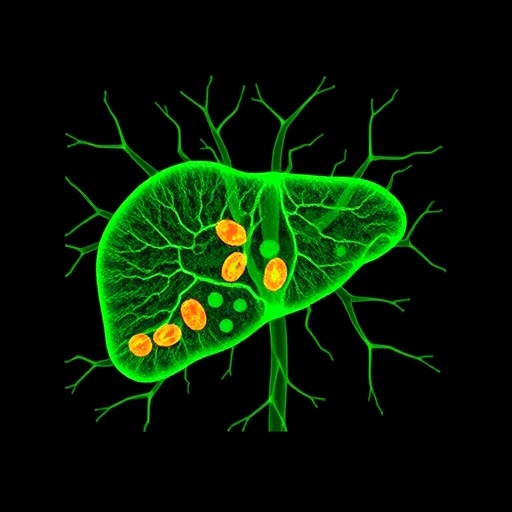Researchers at Cincinnati Children’s Hospital Medical Center, in collaboration with Roche, have introduced a groundbreaking innovation in the field of drug safety—the development of a next-generation human liver organoid microarray platform. This novel approach promises to revolutionize the way drug-induced liver injuries (DILI) are predicted during the drug development process, significantly enhancing patient safety. The research, recently published in the esteemed journal Advanced Science, highlights a significant step forward in understanding the complex mechanisms that lead to idiosyncratic drug-induced liver injuries, which have long proved challenging to predict and prevent.
The liver organoid microarray platform is constructed using induced pluripotent stem cells (iPSCs) and the patient’s own immune cells, creating a fully functional human liver environment that can mimic real-world patient responses to medications. This innovative model aims to address a notable gap in current drug testing methodologies, which often fail to replicate the intricacies of individual immune responses that lead to rare but severe liver injuries following drug administration. The research team’s co-first author, Fadoua El Abdellaoui Soussi, emphasizes the importance of capturing the interplay between liver cells and immune responses, which was previously obscured in traditional lab tests.
The unprecedented ability of this platform to incorporate autologous CD8⁺ T cells—critical immune cells that play a vital role in tissue health and recovery—marks a significant advance in preclinical toxicology. Standard animal models and traditional lab tests are ill-equipped to accurately forecast how specific genetic and immune profiles can affect drug tolerance. This new model aims to comprehensively assess how distinct patient populations, each with their own unique biology, might respond to various pharmaceuticals, thus paving the way for more personalized medicine.
In a compelling demonstration of the platform’s capabilities, the research team successfully replicated a known instance of immune-mediated liver injury resulting from the antibiotic flucloxacillin. This specific reaction is genetically linked to carriers of the HLA-B*57:01 risk gene, underscoring how critically the new organoid system can mimic the physiological processes occurring in susceptible patients. The model closely mirrored the clinical manifestations of immune-mediated toxicity, including the activation of T cells, the secretion of pro-inflammatory cytokines, and damage to hepatocytes, effectively bringing the predictive power of this model to the forefront.
This suite of capabilities is an outcome of extensive foundational work led by Takanori Takebe, a co-author on the study, who has pioneered methodologies for producing reliable human liver organoids from iPSCs. By reconfiguring these methodologies into a scalable microarray format and accommodating patient-specific immune cells, the CuSTOM Accelerator team has created a highly versatile tool that possesses the potential to transform drug testing protocols across the industry.
A major facet of this advancement is the partnership with Roche, a collaboration that embodies the intersection of academic research and industry application. Roche’s expertise in translational toxicology has been instrumental in refining and validating this new platform, demonstrating how synergistic relationships between academic institutions and pharmaceutical companies can yield significant health advancements. Adrian Roth, a prominent scientific director at Roche, succinctly articulates this collaboration’s potential, suggesting that it epitomizes the fusion of innovative academic ideas with practical industry insight.
As Cincinnati Children’s Hospital has been at the forefront of organoid research since the inception of functional human intestinal organoids in 2010, this latest endeavor showcases the institution’s ongoing commitment to advancing organoid medicine. Under the leadership of Dr. Magdalena Kasendra, director of research and development at CuSTOM, the focus has now expanded to developing tools that make these scientific advances actionable in clinical settings, prioritizing patient safety and effective drug development.
Looking ahead, the CuSTOM Accelerator’s objectives include automating organoid assays to facilitate high-throughput screening, a necessary evolution that will enable researchers to explore vast genetic diversity among donor populations. The ability to undertake such expansive screenings will enhance understanding of how drug efficacy and safety can vary greatly among different individuals, ensuring a more thorough consideration of human variability in therapeutic development.
Ongoing collaboration efforts, especially with technology companies like Molecular Devices and Danaher, signal a proactive approach in refining these organoid systems. By integrating automation and high-throughput technology, the research team aims to further bolster the predictive capabilities of their models, thus enhancing the rigor of preclinical safety assessments and ultimately expediting the journey from drug ideation to clinical application.
This innovative research represents just the beginning of a paradigm shift in the realm of drug safety testing. By bridging the realms of biology, engineering, and clinical insights, the vision of CuSTOM to transform organoid science into functional tools for health improvement is within reach. Researchers remain committed to developing solutions that could one day predict individual responses to therapies even before those treatments are introduced into clinical settings.
Through this advancement, Cincinnati Children’s Hospital continues to set the stage for pioneering work in personalized medicine, demonstrating how bespoke models can inform treatment decisions and protect patients from adverse drug reactions. As research progresses, the potential for this organoid technology to become a staple in medical testing and drug development grows, reinforcing the importance of tailored approaches to healthcare.
The road ahead is filled with promise, with the organoid platform poised to enhance our understanding of complex biological responses and ultimately improve patient outcomes in drug therapy. By continuing to innovate and adapt, the scientific community builds a strong foundation for future advancements in organoid medicine and its application in human healthcare.
Subject of Research: Lab-produced tissue samples
Article Title: Autologous Organoid-T Cell Co-Culture Platform for Modeling of Immune-Mediated Drug-Induced Liver Injury
News Publication Date: 26-Sep-2025
Web References: https://pubmed.ncbi.nlm.nih.gov/41001778/
References: Cincinnati Children’s Hospital Medical Center; Advanced Science
Image Credits: Cincinnati Children’s Hospital Medical Center
Keywords
Health and medicine, Biomedical engineering, Pharmaceuticals
Tags: advanced science in hepatologyautologous immune cell incorporationCincinnati Children’s Hospital researchdrug development innovationsdrug-induced liver injury predictionhuman liver organoid platformidiosyncratic drug reactionsimmune-mediated drug toxicityinduced pluripotent stem cellsliver microarray technologynext-generation drug safety testingpatient-specific drug responses





